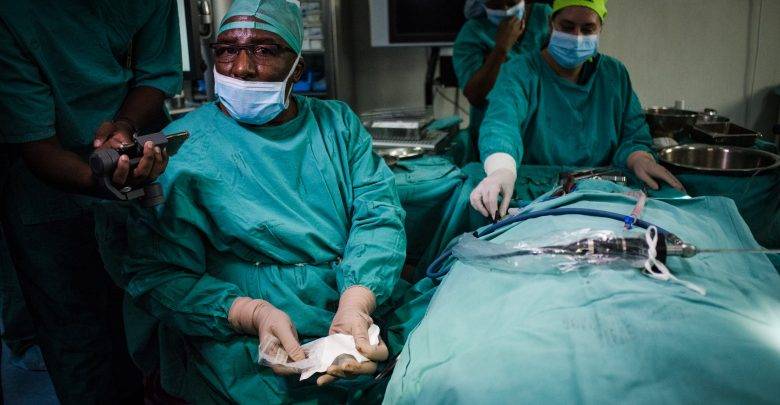A medical specialist from the University of Pretoria (UP) Faculty of Health Sciences has pioneered a new surgical procedure that uses 3D printed middle ear bones to treat conductive hearing loss. The innovative solution was recently demonstrated in the world’s first 3D printed middle ear transplant.
Conductive hearing loss is a problem caused by congenital birth defects, infection, trauma or metabolic diseases. The condition results in difficulty hearing with all sounds seeming muffled. The new treatment option for the condition could help patients around the world regain their full hearing.
So far, the surgery—which can reportedly be performed on people of any age—has already been used to treat two patients. On March 13, Professor Mashudu Tshifularo (who pioneered the technique) transplanted 3D printed ear bones into a patient with an underdeveloped middle ear, replacing the hammer, anvil and stirrup. The process essentially rebuilt the patient’s middle ear ossicles with the help of titanium 3D printing.
40-year-old Thabo Moshiliwa, who suffered damage to his middle ear from an injury, was also treated using the 3D printed ear bones. According to Independent Online, this procedure took just two hours to complete and was an overall success.
“By replacing only the ossicles that aren’t functioning properly, the procedure carries significantly less risk than known prostheses and their associated surgical procedures,” explained Professor Tshifularo, Head of the Department of Otorhinolaryngology at UP. “We use titanium for this procedure, which is biocompatible. We use an endoscope to do the replacement, so the transplant is expected to be quick, with minimal scarring.”
In addition to treating conductive hearing loss, the 3D printed ear bones could be used to simplify other aural procedures, including ossiculoplasty and stapedectomy, because they lessen the risk of intrusion trauma. The breakthrough surgery also reduces the the risk of facial nerve paralysis, which can happen during ear surgery if a facial nerve that passes through the middle ear is damaged.
Presently, the University of Pretoria and Professor Tshifularo are seeking partners and funding to take the 3D printed middle ear transplants to the next level. The ultimate goal is to standardize the procedure and apply it broadly to treat conductive hearing loss.
“3D technology is allowing us to do things we never thought we could,” said Professor Tshifularo. “But I need sponsors and funding for this invention to take off the ground.”
Source: 3dprintingmedia.network


